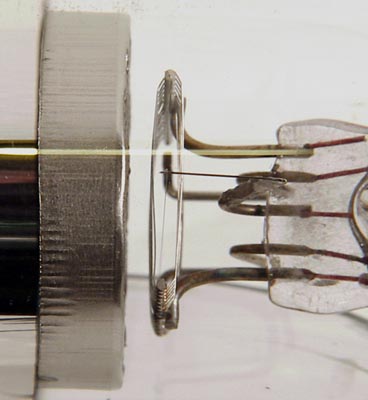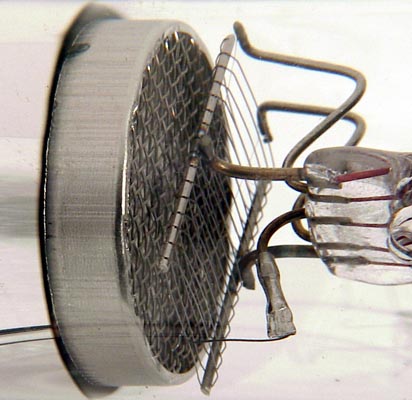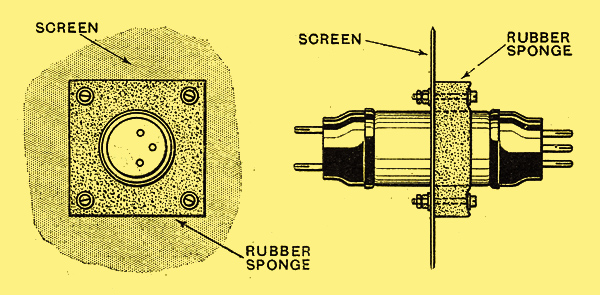The S625 RF tetrode was a design classic, and became a bench mark for later developments. It was introduced in 1927, and had a dull emitter filament (Thoriated Tungsten). The amplification factor was 110. The valve was designed to be used horizontally with the grid and anode circuits in different metal compartments. The valve would be aligned so that the screen grid lay in the circular cut-out of the chassis for maximum effect.
The filament was a fine thread shaped into a V. The control grid was a flattened helix and encloses the filament. In this design the electrons are attracted in one direction only.
In the third picture the screen grid mesh is clearly visible welded to a cylindrical collar. The screen grid encloses the anode to minimise the stray capacitances, and thereby the coupling between the grid and anode circuits.Some years later Cossor produced a replacement type the ARS6. By the introduction of this later valve the standard valve construction of concentric grids was being used.The pins are spaced according to the B4 base specification but there are three pins one end and two the other.
This double ended valve presented problems of how to mount successfully. Ideally the valve was mounted with an external metal screen at the place the internal screen was positioned. The illustration is taken from Wireless World, Wednesday February 8, 1928 and suggests the use of a foam rubber collar to hold the envelope.The wide glass tube envelope is 33 mm in diameter and, excluding the double ended base pins, is 92 mm tall.References: Private communication & 1005 Type S625 was first introduced in 1927. See also 1927 adverts. |